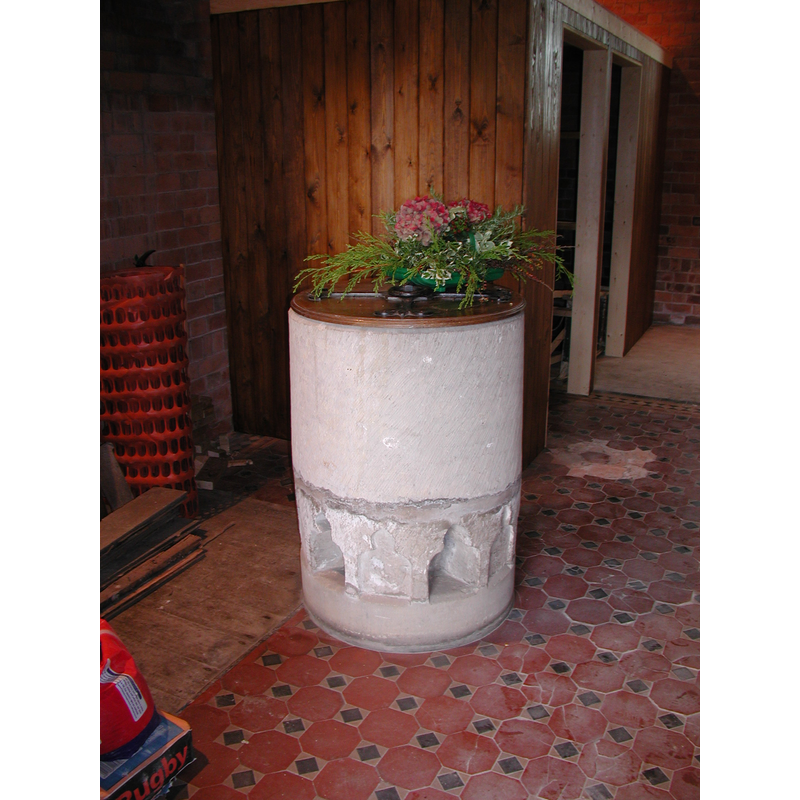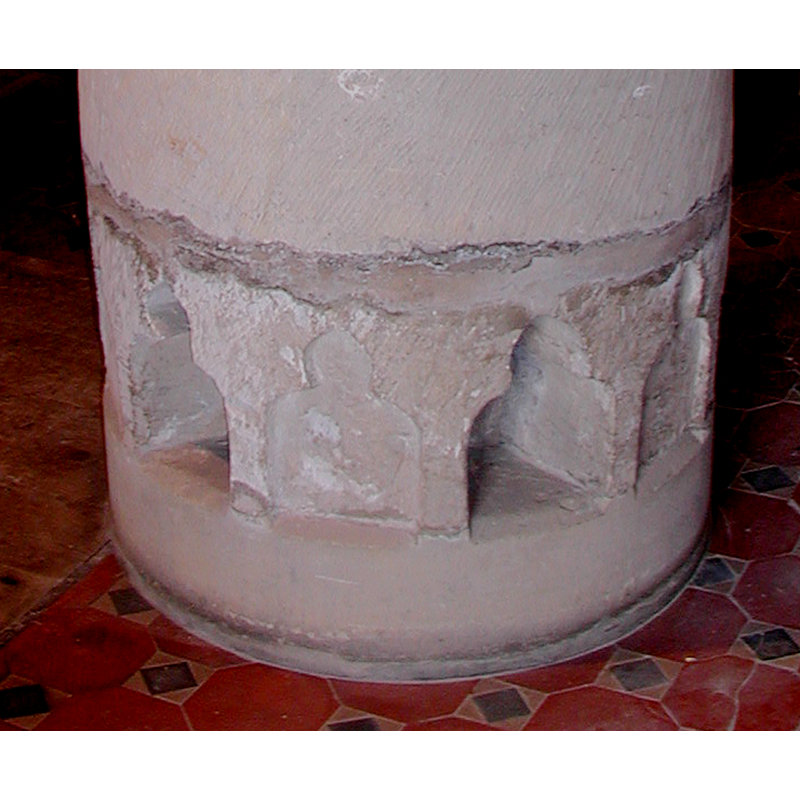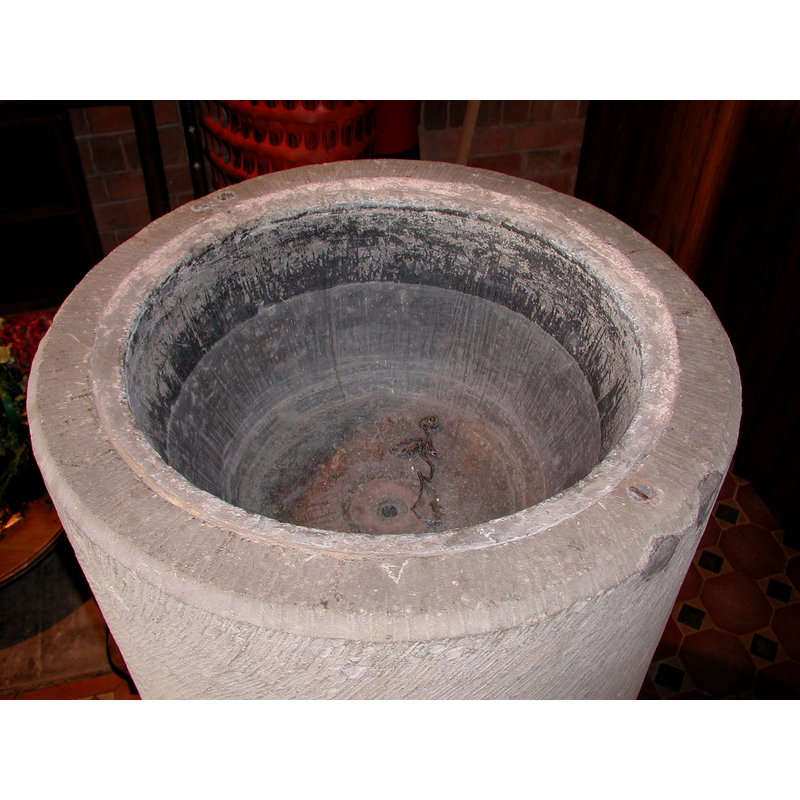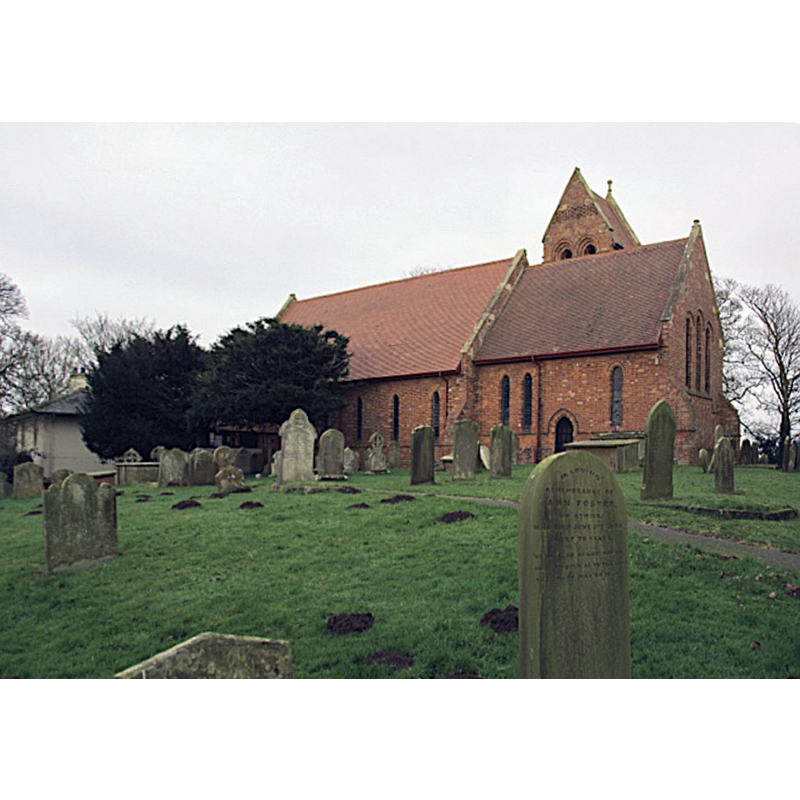Atwick

Image copyright © Colin Hinson, 2008
Image and permission received (email of 14 November 2004)
Results: 4 records
design element - architectural - arcade - trefoiled arches
Scene Description: note the hollowed out arches alternating with the others
Copyright Statement: Image copyright © Colin Hinson, 2008
Image Source: digital photograph taken in 2004 by Colin Hinson [www.yorkshireCDbooks.com]
Copyright Instructions: Image and permission received (email of 14 November 2004)
view of basin - interior
Scene Description: note the metal staples of the old font in the upper rim
Copyright Statement: Image copyright © Colin Hinson, 2008
Image Source: digital photograph taken in 2004 by Colin Hinson [www.yorkshireCDbooks.com]
Copyright Instructions: Image and permission received (email of 14 November 2004)
view of church exterior - southeast view
Scene Description: Source caption: " St Lawrence's Church, Atwick. The present building replaced the original medieval church in 1876. It consists of a nave and chancel in red brick. The only surviving medieval feature is a Romanesque font."
Copyright Statement: Image copyright © Paul Harrop, 2017
Image Source: digital photograph taken 20 January 2017 by Paul Harrop [www.geograph.org.uk/photo/5259021] [accessed 31 October 2019]
Copyright Instructions: CC-BY-SA-2.0
INFORMATION
FontID: 01940ATW
Object Type: Baptismal Font1
Church/Chapel: Parish Church of St. Laurence [formerly St Peter's]
Church Patron Saints: St. Lawrence [aka Laurence] [formerly St. Peter]
Church Location: Church Ln, Atwick, Driffield YO25 8DH, UK
Country Name: England
Location: East Riding of Yorkshire, Yorkshire and the Humber
Directions to Site: Located off (W) the coastal B1242, 3 km N of Hornsea, 24-25 km NE of Hull city centre
Ecclesiastic Region: Diocese of York
Historical Region: Hundred of Holderness [Middle Hundred]
Font Location in Church: Inside the church
Century and Period: 13th - 14th century, Decorated
Cognate Fonts: [cf. FontNotes]
Credit and Acknowledgements: We are grateful to Colin Hinson, of www.yorkshireCDbooks.com, for his photographs of this font.
Font Notes:
Click to view
No idividual entry found for Atwick in the Domesday survey. Glynne's visit of 27 July 1867 (in Butler, 2007) notes: "The font is cylindrical." Listed in Cox & Harvey (1907) as a baptismal font of the Decorated period. The entry for this parish in the Victoria County History (York East Riding, vol. 7, 2019) notes: "Everard de Ros gave Atwick church to Bridlington priory c. 1130. It was evidently then served by a chaplain. By 1228 the priory had appropriated the rectory and a vicarage had been ordained. [...] The church of ST. LAWRENCE was rebuilt in the 19th century. The earlier building was dedicated to St. Peter in 1295, but the modern dedication was in use by 1461. [...] The fittings include a drum-shaped medieval font". The entry for this church in the CRSBI (2019) notes: "The only surviving medieval feature is a Romanesque font. [...] The font consists of a plain cylinder on a similar diameter base in which is cut a trefoiled arcade without any moulding; its central cusps are ogee. These two hand-made parts stand on a machined plain cylindrical plinth also of the same diameter. Alternate bays of the arcade are hollowed out to a depth of 0.10 to 0.15m. The arcade is regular except at one point where a larger, approximately semicircular, arch contains a central plain trefoiled bay flanked by two half bays which are hollowed out. Both cylinders have been retooled in a similar manner, and the rim of the basin looks as though it has been chamfered after first making"; the Comments/Opinions field in the CRSBI entry [cf. supra] adds: "Morris 1919, 54-5, quotes Poulson, 1840, I, 70: 'The font is cylindrical, and was probably originally sculptured, as it has been chisseled for the purpose of smoothing and ‘improving’ its appearance; some of the details are of the decorated style of the fourteenth century'. There is, however, no sign of lost sculpture on the cylinder. Pevsner and Neave 1995, 267, describe it simply as ‘medieval, drum-shaped on a base with a trefoiled arcade’. From the dimensions of the upper cylinder, it seems likely that that part at least is a standard early twelfth-century font. Another feature indicating this period is the imperfection of the cylinder, which is wider at the bottom (compare Market Weighton). Plain cylinders of comparable dimensions occur locally at Lissett and Fraisthorpe, both on modern bases. The Fraisthorpe example probably has its original tooling, suggesting that the chamfer on the Atwick font may be the original one retooled. Both the plain cylinder and the arcaded base have a fairly fresh surface exposed by the retooling; the stone in both of them looks the same, a whitish limestone. It is therefore possible that the cylinder had this base from the beginning, and that the arcade was cut in it in the 14th or 15th centuries. Retooling was mentioned by Poulson in 1840, so is unlikely to be the product of a Victorian restoration. The irregular part of the trefoiled pattern might perhaps be bounded by the remains of a 12th-century arcade. For this, the font at Barmston supplies a rare comparison. This base protrudes beyond the cylinder and has been damaged in places; it has a semicircular arcade cut in it which is hollowed out. The upper cylinder at Barmston has similarities of pattern and size to the font at Flamborough. It seems possible that a later medieval repair at Atwick cut away a similarly-projecting base to a surface continuous with the cylinder containing the basin. The contemporary style of arcade was then cut, except in one place where the old round-headed hollowed-out arch could not be eliminated. The purpose of such a base as that surviving at Barmston is curious: that it projects could be something of an impediment in modern-day baptisms of children. Why was it then extended like this? Was an extended base not only to give a low cylinder height, but perhaps to help the (adult) person baptised to step into and out of the font?". The baptismal font at Atwick St. Lawrence's looks rather strange: the plain cylindrical basin has perfectly vertical sides and it has the apearance of having been re-tooled; it is mounted on an odd base: again a perfect cylinder but, in this case, with an arcade of trefoil arches, every other arch actually hollowed in all the way to the centre core of the stone. The two pieces are obviously joined together by mortar. The inner basin well is lead-lined. Flat wooden cover, modern. The upper basin rim has traces of the metal staples of the old cover.
COORDINATES
Church Latitude & Longitude Decimal: 53.939557, -0.19646
Church Latitude & Longitude DMS: 53° 56′ 22.4″ N, 0° 11′ 47.26″ W
UTM: 30U 684014 5980437
MEDIUM AND MEASUREMENTS
Material: stone, type unknown
Font Shape: cylindrical (mounted)
Basin Interior Shape: round
Basin Exterior Shape: round
Drainage Notes: lead lining
Rim Thickness: 10 cm [calculated]
Diameter (inside rim): 52 cm*
Diameter (includes rim): 72 cm*
Basin Depth: 30 cm*
Basin Total Height: 52 cm*
Height of Base: 29 cm*
Font Height (less Plinth): 81 cm*
Notes on Measurements: * CRSBI (2019)
LID INFORMATION
Date: modern
Material: wood
Apparatus: no
Notes: [cf. FontNotes for details]
REFERENCES
Victoria County History [online], University of London, 1993-. Accessed: 2019-10-31 00:00:00. URL: https://www.british-history.ac.uk.
Cox, John Charles, English Church Furniture, New York: E.P. Dutton & Co., 1907
Glynne, Stephen Richard, The Yorkshire notes of Sir Stephen Glynne (1825-1874), Woodbridge: The Boydell Press; Yorkshire Archaeological Society, 2007


